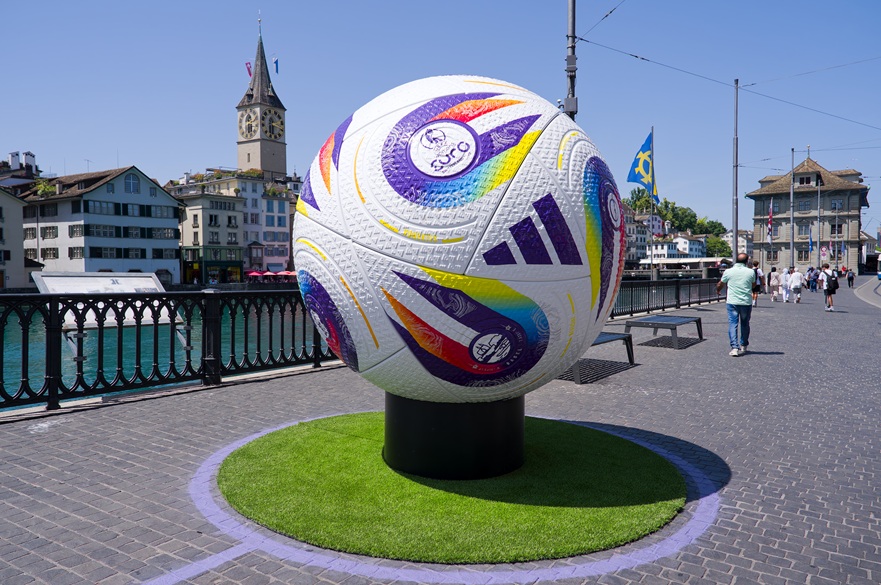Expert blog: If she can see it, she can be it – female footballers inspiring girls into sport, a Euro 2025 reflection
With the UEFA Women's EURO 2025 well underway, Dr Athalie Redwood-Brown, takes a look at how female footballers are not just sporting icons, but role models shaping a new generation of girls
By Dr Athalie Redwood-Brown, Senior Lecturer in Physical Activity and Health | Published on 11 July 2025
Categories: Press office; Research; School of Science and Technology;

As the UEFA Women’s Euro 2025 captures global attention this summer, something powerful is happening off the pitch.
Young girls are watching athletes like Lauren James, Alexia Putellas, and Fridolina Rolfö excel under pressure, break records, and lead their nations.
These players are more than just sporting icons, they are role models shaping a new generation of girls who believe they, too, belong in football. For decades, girls’ involvement in football was limited by gender stereotypes, lack of opportunity, and underrepresentation in the media.
Without female players to look up to, many simply didn’t view sport, and football in particular, as something meant for them.
But that is changing rapidly. With the rise of elite female footballers and record-breaking media coverage, today’s girls are not only watching the game, they are joining it.
Visibility and representation
High-profile tournaments such as Euro 2025 have made female footballers more visible than ever before. Stadiums are packed, matches are broadcast live, and national pride is no longer reserved for men’s teams.
Events like these send a clear message: women’s football matters. Visibility like this has a direct impact. Studies show that when girls see female athletes in the media, they’re more likely to participate in sport themselves and believe in their athletic potential.
Role models help turn passive interest into active involvement, especially when those role models are relatable and successful.
Role models beyond the elite
While international stars play an important role, so do everyday role models: coaches, teachers, older players. Girls are more likely to stay engaged in football when they see women leading on and off the field.
Local representation creates a sense of belonging that elite athletes alone can’t provide. That’s why initiatives like the FA’s Inspiring Positive Change are vital. The programme is working to ensure all girls in England have access to football in schools, and to increase the number of women in coaching, refereeing, and management.
As Euro 2025 brings football into homes and schools, these efforts help connect inspiration to real opportunity.
The influence of social media
Today’s generation of girls doesn’t just see players on TV, they follow them online. Through Instagram, TikTok, and YouTube, players share their daily routines, training habits, and personal stories. This visibility builds a more human connection, making elite athletes feel accessible and authentic.
Campaigns like This Girl Can have shown that showcasing real, imperfect, everyday stories of active women can be just as effective as spotlighting elite performers . This combination of celebrity and relatability is powerful: girls feel seen, and sport feels achievable.
Participation is growing — but not for everyone
There is clear evidence that visibility leads to higher participation. After major tournaments, clubs report spikes in sign-ups for girls’ teams. But the benefits are not equally spread. In areas where female role models remain rare, due to lack of access, resources, or representation, participation stays low.
Diversity also matters. Girls need to see role models who reflect different ethnicities, backgrounds, and body types to fully believe there is a place for them in sport. Research highlights that exposure to diverse and relatable role models strengthens girls’ confidence and long-term engagement.
Challenges that still exist
Despite the success of Euro 2025 and growing public interest, women’s sport still faces significant structural challenges. Media coverage, sponsorship, and funding remain vastly unequal. According to recent data, only around 4% of global sports media focuses on women.
Inspiration can bring girls into football, but retention depends on infrastructure. If schools lack kits, safe playing spaces, or trained female coaches, enthusiasm may quickly fade. It’s not enough to celebrate the stars, we must also build systems that support the girls who look up to them.
Continue investing
The UEFA Women’s Euro 2025 is more than a competition, it’s a cultural shift. It showcases the excellence of women in football and gives girls across Europe and beyond the opportunity to dream bigger.
Female footballers are leading a movement that is changing the way sport is perceived, played, and supported. But to turn inspiration into action, we must continue investing in access, representation, and role models at every level.
The message is clear: when girls can see themselves reflected in sport, on screens, in schools, and on sidelines, they are far more likely to step onto the pitch themselves.
If she can see it, and she’s given the chance to play, she really can be it.